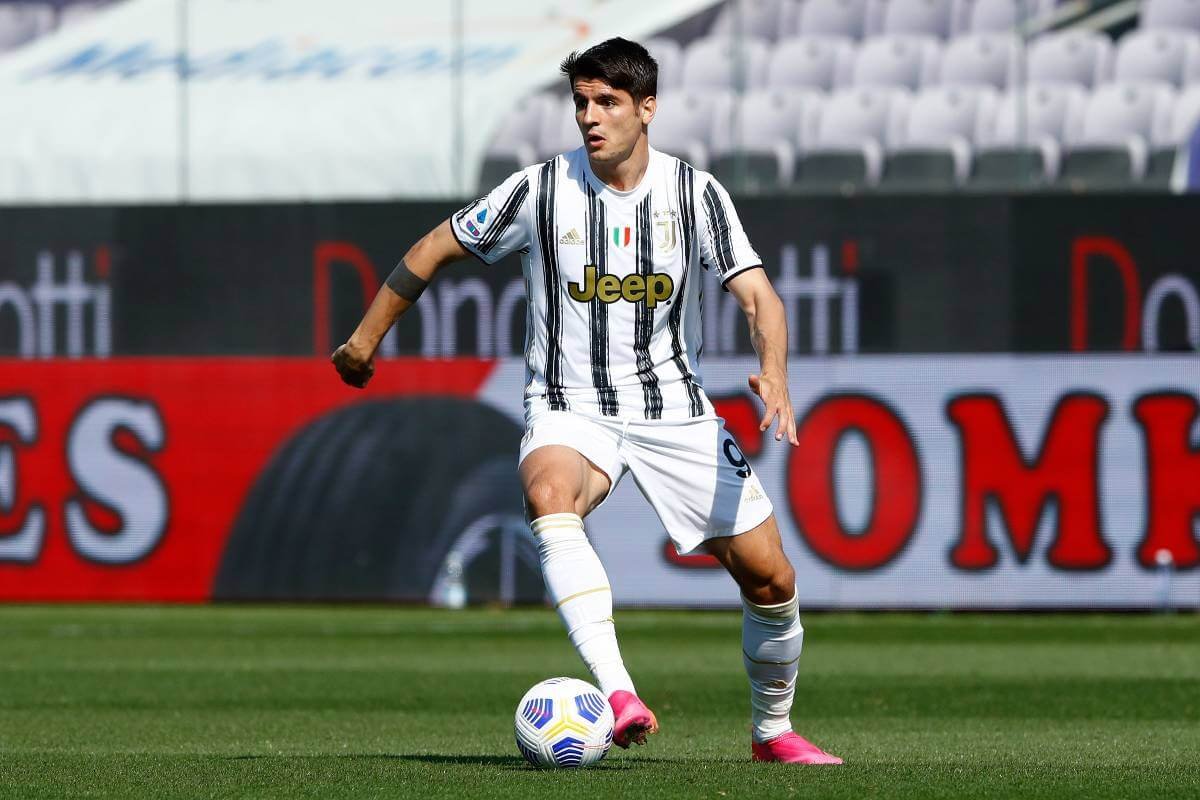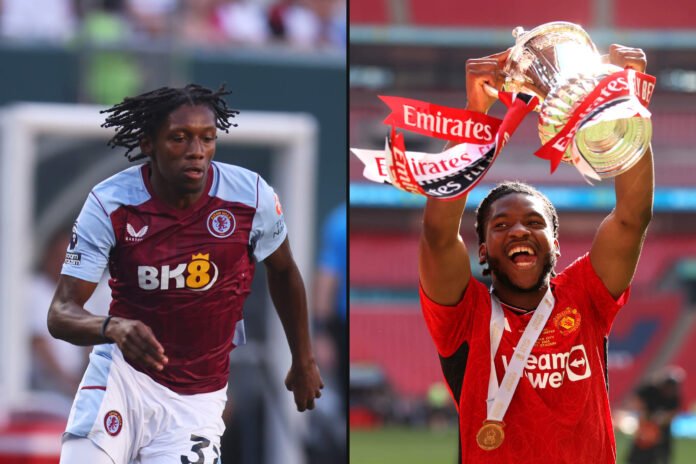As clubs juggle their immediate needs for the 2024-25 season with squad rules and their desire to develop talent, buy-back clauses are back on the agenda.
The two big examples are Jaden Philogene returning to Aston Villa from Hull City on a matching-rights clause (allowing them to buy their former player after they equalled Ipswich Town’s bid), and Manchester United selling talented 19-year-old defender Willy Kambwala to Villarreal with a buy-back clause in the deal.
Such clauses are far from a new invention, but the way Premier League clubs employ them has shifted closer to Real Madrid’s method of letting talent leave to develop while wielding the power to bring them back if they reach the required level.
Here’s how they work, and why they’re having a moment.
The first well-known example of a buy-back clause in the English game involved Luther Blissett, one of the first Black players to play for the England senior team (14 caps). Having just scored 27 goals for Watford in the old First Division, the precursor to the Premier League, Blissett was sold to AC Milan for £1million ($1.3m at today’s exchange) in 1983.
One year and five goals in 30 Serie A appearances later, Blissett was placed on the transfer list by Milan. When Watford sold him the year before, they had included a clause in the deal that gave them first refusal on the striker.
“I have very happy memories of Watford, and I still have a great feeling for the club,” Blissett said following his difficult year in Italy. “But Milan would obviously want to recoup some of the transfer fee they paid for me, and whether Watford could afford me is another matter.’”
They could and they did thanks to Milan cutting their losses and selling him back to Watford for £550,000, representing a tidy profit for the Hertfordshire club.
Luther Blissett, right, with Watford manager Graham Taylor in 1978 (Evening Standard/Hulton Archive/Getty Images)
The buy-back mechanism has been relevant in a few deals recently.
One example is Kambwala, who left Manchester United to join Villarreal on a five-year contract in a deal worth up to €11.5million (£9.7m; $12.5m) this week. As a layer of protection, United inserted a buy-back option and matching rights for three years, plus a sell-on clause, ensuring they have a say in his future if circumstances change.
Last summer, Villa inserted similar clauses into deals that saw Cameron Archer leave for Sheffield United and Aaron Ramsey depart for Burnley. And it would not be a surprise if others followed suit this summer, with clubs having to balance their need to develop their talent while also complying with limits on loans. Being able to let players go and bring them back (if wanted) is ideal.
“The selling club can buy back the player for a certain amount of money in particular circumstances — like, for example, a particular future transfer window,” says sports lawyer Daniel Geey, who advises clients on transfers and contract negotiations. “The consequence is twofold, and it can align for both parties.
“For the selling club, it could be that the player is not in the first-team reckoning in the short term. Usually, these are very good up-and-coming players, and it might be that playing for another club for a certain period will mean they gain important first-team experience.
“If the club have a strong feeling the player will excel, it can give the selling club some comfort that, for a pre-arranged fee, the player can return. It can de-risk a transfer for the selling club.”
Since 2012, Real Madrid have inserted a buy-back clause when selling many of their young players, including Alvaro Morata (to Juventus), Casemiro (Porto), Lucas Vazquez (Espanyol) and Dani Carvajal (Bayer Leverkusen). All returned to the Santiago Bernabeu.

Morata moved to Juventus in 2014 but the Spanish club inserted a buy-back clause (Matteo Ciambelli/DeFodi Images via Getty Images)
Carvajal, for example, signed a five-year contract with Leverkusen for a fee of around €5million in July 2012. Madrid inserted a buy-back clause in the region of €6.5m if they wanted to sign him back after one season, €7m if after two, or approximately €8.5m after three.
Carvajal then had an excellent debut season in the Bundesliga and was voted the third-best right-back in the league by fans, behind Bayern Munich’s Philipp Lahm and Atsuto Uchida of Schalke.
“It gives the possibility for a buying club to buy a player the selling club might not want to have sold but for the buy-back provision,” says Geey.
“What can happen sometimes is that a buying club might argue that, if the selling club wants the buy-back at a reasonable rate, the original transfer amount has to be at a more reasonable level, too. So sometimes the buying club will take the buy-back fee being more reasonable if they feel like they are getting good initial value for money.”
In the case of Carvajal, Madrid exercised their buy-back option on Carvajal the following summer (2013). He has since gone on to win six Champions League trophies and four La Liga titles with his boyhood club, cementing his status as a club legend.
Madrid have also used the buy-back system to make a sizeable profit in the transfer market, activating their £26million option to re-sign Morata from Juventus in the summer of 2016 before selling him on to Chelsea a year later for around £60m.
In 2019, Douglas Luiz signed for Aston Villa for £15million from Manchester City. The deal included a buy-back clause that expired in June 2021, but despite the Brazilian midfielder impressing at Villa Park, City did not use it.
As it transpired, Douglas Luiz took his game to another level under Villa head coach Unai Emery and was instrumental in the club qualifying for the Champions League with a fourth-placed finish last season. In June, Douglas Luiz moved to Juventus in a deal influenced by profitability and sustainability (PSR) regulations worth €50m.
In some cases, players may also be reticent to rejoin a club that once sold them.
Chelsea have included buy-back or other similar clauses in several deals in recent years — particularly for players who have come through the club’s academy. Roma striker Tammy Abraham can be brought back to Stamford Bridge for around £69m, while the club also holds matching rights on any offer for Crystal Palace defender Marc Guehi, who has been linked with a move away after a strong showing at Euro 2024 with England.

Could Tammy Abraham, now of Roma, end up back at Chelsea? (Francesco Pecoraro/Getty Images)
Abraham has publicly refused to rule out playing for Chelsea again — but the west London club paying more than double the £34m they received from Roma in 2021 would require a very high degree of confidence in a player who has only started two league games since returning from an anterior cruciate ligament injury suffered in June 2023.
In the case of Guehi, the centre-back would still need to choose his old club, who had previously decided to sell him, over another bidder.
While the primary consideration for re-signing a player using a buy-back clause relates to their ability on the pitch, it also offers squad benefits. Academy players represent pure profit in accounting terms when sold on the first occasion. Even if they return, a buy-back clause typically means the player will likely re-join for a favourable fee. This may allow the club to profit considerably if the player is sold again later.
A recent example of this involves Philogene, who left Villa for Hull in September 2023 in a £5m deal, which included a buy-back option if Hull were promoted.
Philogene impressed for Hull in the Championship last season, which led Ipswich Town to agree an £18m deal to sign him this summer, with personal terms agreed. Villa, however, then moved to re-sign him by activating matching rights, which was negotiated when they sold him to Hull. But Villa’s transfer outgoing was reduced by 30 per cent because of a sell-on clause in the terms of the original sale.
So on top of the financial benefits, Villa now have another homegrown player who is ready for the first team — in the Premier League, clubs need at least eight ‘homegrown players’ (those who have been registered with any domestic club for at least three seasons before their 21st birthday) out of a squad of 25. UEFA has similar regulations but also requires that four of a minimum of eight homegrown players have come through the club’s academy.
In this respect, Philogene addresses a potential headache for Villa in their first season in the Champions League since it was rebranded from the European Cup in 1992.
Whether there is delayed pushback from leagues and confederations remains to be seen, but buy-backs and matching rights are now very much a factor in the English game again, particularly for top clubs.
(Top photo: Jaden Philogene last summer by Mike Stobe; and Willy Kambwala with the FA Cup in May by Alex Pantling; both via Getty Images)
Read the full article here


